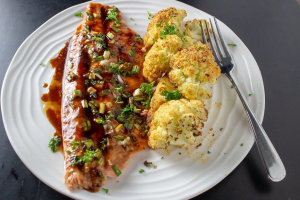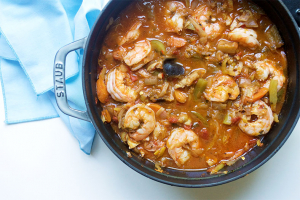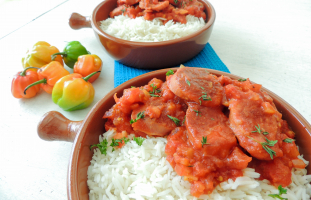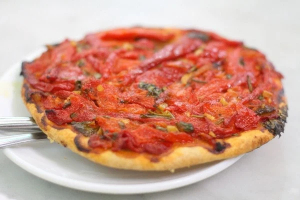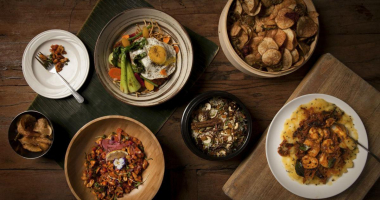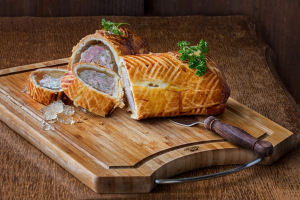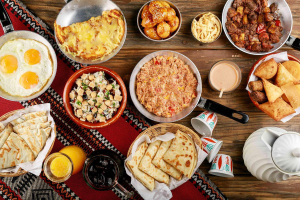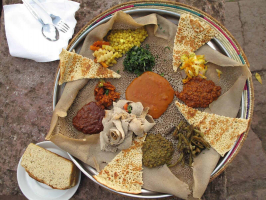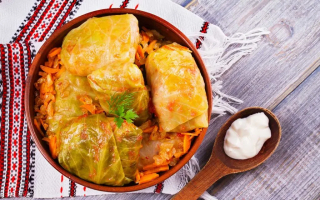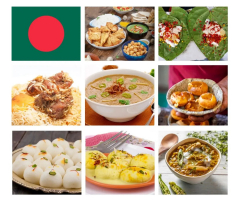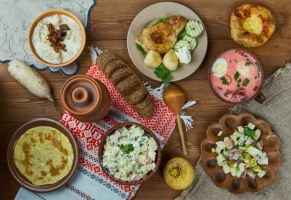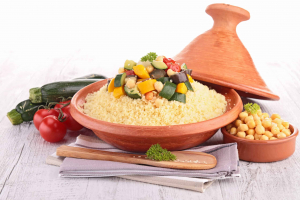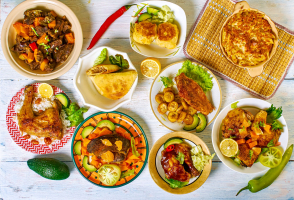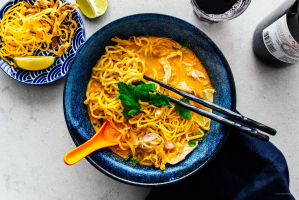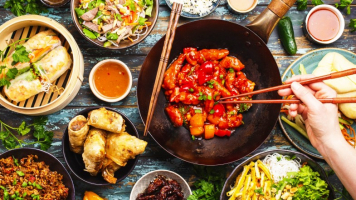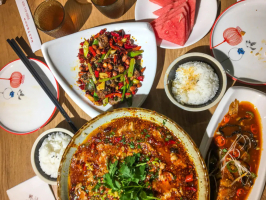Top 10 Best Foods In Uganda With Recipe
Ugandan cuisine provides food for the soul as well as the stomach! Ugandan cuisine emphasizes local foods and time-honored techniques, with characteristic ... read more...items such as the country's staple food matoke (cooking bananas), cornmeal, beans, sweet potatoes, cassava, and peanuts all featured prominently in meals. Food is an important aspect of the culture here, and each tribe has its own specialty dish. The food here is mostly influenced by English, Asian, and Arab cuisines, as well as African cuisine. Here is a list of the best foods in Uganda with recipe.
-
Katogo ranks first in the list of the best foods in Uganda with recipe. It is a typical Ugandan delicacy eaten during breakfast. Katogo was once considered a poor man's diet because it was made with beans and diced cassava (or Yuca, as many people outside the African continent call it). However, as time passed and with more variety of foods available, even the wealthy boasted about liking the dinner. The substitution of cassava for maize is a considerable improvement in the manufacture of Katogo. Traditionally, most Africans consume cassava only after it has been fermented and processed in different ways. Its stringy quality makes it unsuitable for some forms of blended preparation.
Ugandans eventually substituted cassava with matooke in Katogo. As more people became aware of the meal, different variations evolved. Sauces and organ meats were introduced to improve the taste of the food. Creativity produces results. Katogo is now commonly consumed in restaurants and in most regions of the world. Starving? Katogo never fails to impress! You're aware that you'll be working hard all day and may have less time to eat? Katogo, eat! Your body will go to work effortlessly and will just ask for water during the day. It's why the Yorubas (an African tribe in modern-day Nigeria and parts of the Republic of Benin) call it Kankere, which is also the term for bricks!
Ingredients
- 500g peeled green bananas (Matooke), 1 onion (chopped), 250g boiled beans, Green pepper, 3 tomatoes (grated), 1tsp black pepper, Salt, 1tsp cumin, 1tsp curry powder, Cooking oil
Instructions
- Peel, chop, and clean your green bananas and set them aside
- Sauté onions in a cooking pot until they attain a brownish color. Add salt and tomatoes and stir for 1 minute. Add your green bananas and continue stirring for another one minute. Add water two cups, and cook for 8 minutes under medium heat
- Add your cumin, curry powder, and black pepper and stir to make sure it’s adequately incorporated. Simmer for two minutes, then taste if the spices are consistent.
- Drain your beans soup in a basin and rinse with clean water. Add your beans in your pot and simmer for 10 minutes.
- Garnish with coriander and enjoy with black tea, coffee, rice, or flatbread
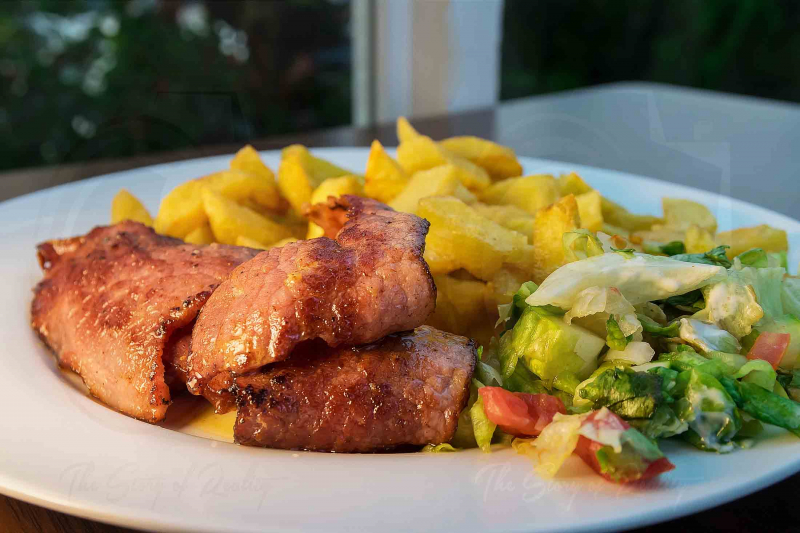
ugtickets.com 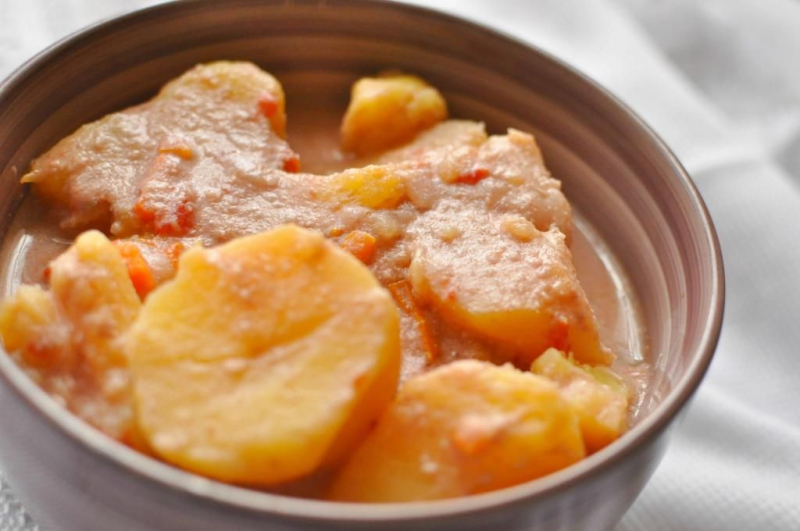
ugtickets.com -
You'll find a roll wallah stirring up some delectable sorts of rolls in small corners of the streets. Eggs are a high-protein food that is also fairly satisfying. The ease and convenience with which you may make an egg roll makes it a simple task. Yes, this is not a high-end timepiece. A rolex is a treat that may be enjoyed at any time of day. It's so delectably unique that nearly every Ugandan has a favorite rolex guy, which comes with a certain sense of loyalty. A rolex is formed with fried eggs wrapped in chapati (flat bread). To the eggs, you can add onions, tomatoes, green peppers, and cabbage.
The Guinness Book of World Records recently posted a video of a huge egg rolex being made in the African country. It stated that this was the largest Ugandan rolex and hence deserved to be included in the Guinness Book of World Records. With a length of 2.32 meters, the egg rolex weighted around 204.6 kg, and the number of substances used in its creation will astound you. A team of 60 individuals worked together to prepare this massive egg rolex, lead by Raymond Kahuma, a YouTuber and Uganda native.
Ingredients
- 1 (9-inch) flour tortilla, 2 eggs, ¼ tsp. kosher salt, freshly ground black pepper, Small handful finely sliced Savoy cabbage, 1 tbsp. finely diced Roma tomato, 1 tbsp. finely diced red onion, 1 tbsp. finely diced green bell pepper, additional tomato or cabbage for garnish, optional hot sauce, additional salt
Instructions
- Peel the onions.
- Chop the onions and cabbage very finely. You want these to be small enough to cook through quickly.
- Wash the coriander and the tomatoes. Shred/chop the coriander. Slice the tomatoes thinly.
- Warm the chapati in a non-stick pan according to pack instructions. Keep to one side.
- Break the eggs into a big bowl. Add the onions, coriander and cabbage with some salt. Whisk together and divide the mixture into two portions.
- Place a non-stick pan over medium heat. Add the 1 tablespoon oil and swirl the pan around to coat the surface.
- Pour in one portion of the egg mixture; swirl to cover the surface of the pan and reduce the heat. Check that the bottom is set by lifting the sides carefully with a flat spoon. Turn over gently to allow the other side to cook through, then remove from heat.
- Peel and cut the avocado into cubes.
- Place the cooked chapati on a flat plate. Place the egg on top, layer the tomatoes and avocado. Finish with some fresh coriander.
- Roll the chapati and wrap in foil or paper before eating hot or cold
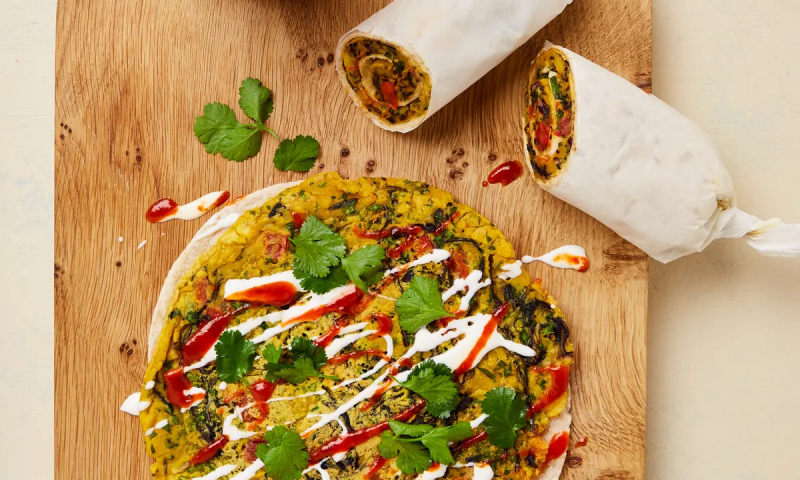
dontmissmyplate.com 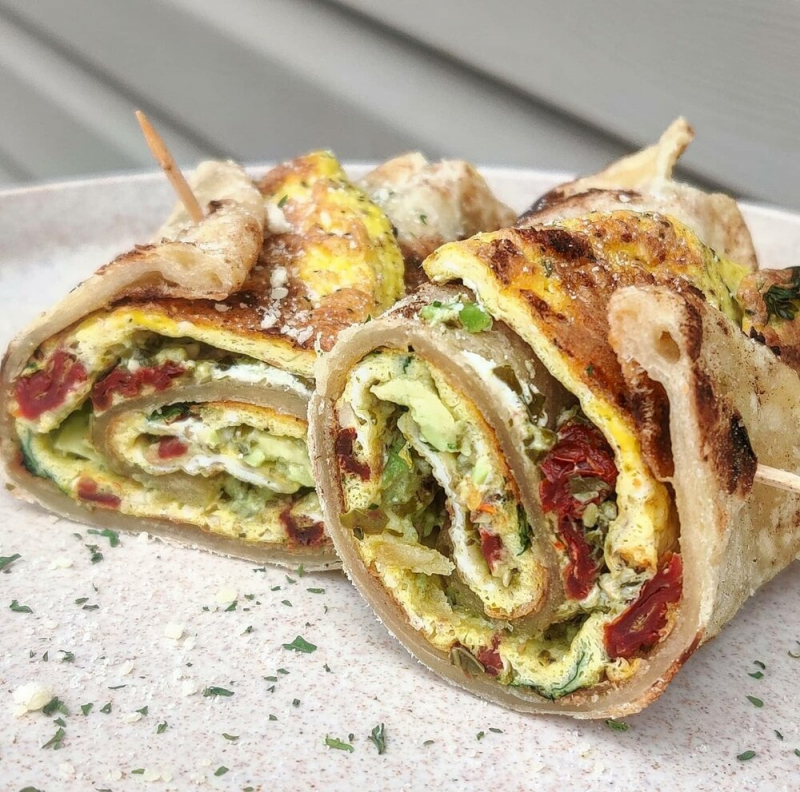
ozy.com -
Corn tortillas ranks 3rd in the list of the best foods in Uganda with recipe. Tacos are very popular in the United States. Every village on the earth has one type of bread that they eat with everything. In Uganda, chapati is a popular side dish and bread staple, particularly in restaurants. This bread is typically served as a side dish for the main course, sliced into triangle forms.
Chapatis are made by combining wheat flour, baking powder, onions, green pepper, carrots, salt, and water, then flattening and frying in small amounts of oil. Once fried, chapatis can be utilized for a variety of reasons. Don't be thrown off by the prospect of producing your own brea If you don't want to deep fry the bread, you can pan fried it in a little oil, ghee, or butter.
You might use a variety of fillings, such as peas boiled with aromatic herbs or potato. The filling can be eliminated entirely, and single slices of bread can be deep-fried or pan-fried. They go well with beans or gravy. You can also wrap minced beef, cooked eggs, and veggies in them. A chapati can also be served as an accompaniment to your morning or evening tea in addition to the main menu.
Ingredients
- 3-4 cups wheat flour, plus extra for kneading and dusting, 1-2 cups warm water, 1 tsp salt, 1 tsp sugar, Enough vegetable cooking oil for frying
Instructions
- Cut the roti or parantha into roughly small pieces.
- Heat oil in a wok. Add all vegetables except tomato. Add salt, Stir for 2 minutes. Add Tomatoes. Stir for few seconds.
- Add soya sauce, chilli sauce, red chili sauce, ketchup and mix well. Stir for a few seconds.
- Add in the chapati pieces and mix well. Stir for 1-2 mins. Turn off the gas. Add lemon juice or vinegar. Mix well.
- Garnish with spring onion and cilantro. Your fried chapati is ready!
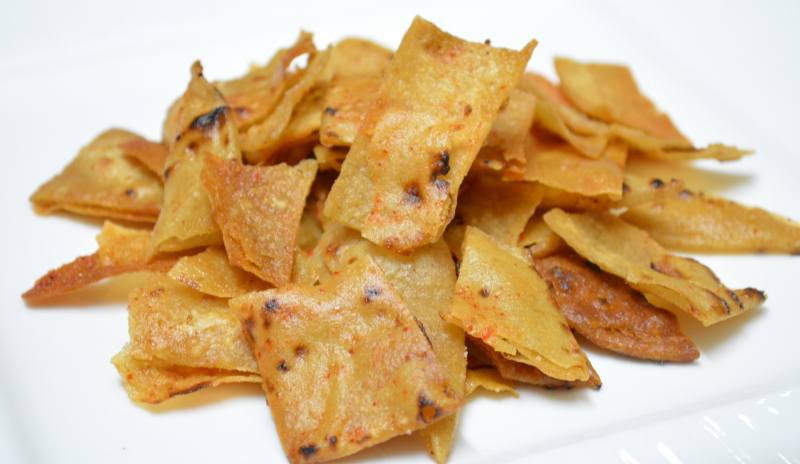
archanaskitchen.com 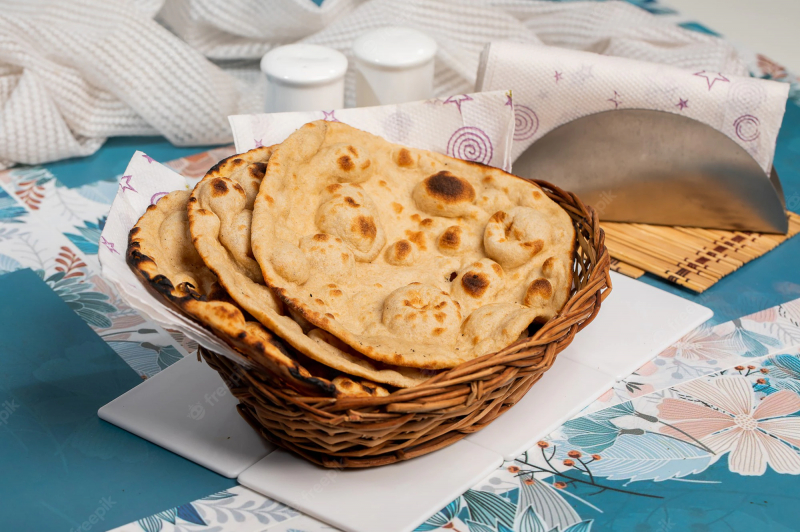
cookpad.com -
The Ugandan egg roll is not to be confused with the popular and well-known Chinese egg roll, which originated in China. The African egg roll, as it is commonly known, is made up of a boiled egg and various seasonings wrapped around the egg. The boiled egg in Uganda is wrapped around a mass of mashed Irish and deep-fried, whereas the boiled egg in Nigeria is wrapped around a mass of dough and deep-fried. This recipe teaches us how to create Ugandan Egg Rolls.
In Uganda, egg rolls can be purchased from snack bars and some restaurants. Restaurants typically serve them for breakfast, although snack bars serve them at any time of day. An egg roll in Uganda costs between 1,000 and 2,000 Uganda shillings, depending on where you get it, and there are two things to keep in mind when preparing ugandan egg rolls: Deep-frying egg rolls at medium heat is recommended. This is due to the fact that Ugandan egg rolls are wrapped around a mound of Irish. Cooking the egg rolls on a high heat prevents them from cooking on the inside. For best results when frying, the egg rolls should be completely submerged in the oil.
Ingredients
- 6 medium-sized potatoes, 5 large eggs, 1 Cup of Bread crumbs, 1 Tsp black pepper, 1 Tsp. Curry powder, 1 Tablespoon of Margarine, Salt to taste, Vegetable Oil for frying
Instructions
- To prepare hard boiled eggs, bring water in a pot to a rolling boil. Add 6 eggs and reduce the flame to medium. After
- 10 minutes, remove pot from the stove and add ice to stop the eggs from cooking further.
- Once the eggs are cool, peel and set aside.
- Bring a pot of water to a boil. Add the potatoes and allow to cook until the potatoes are fork tender.
- Once cool, peel the potatoes.
- Mash the potatoes until fine and smooth.
- Add the seasonings: turmeric, cumin, chili and salt to the mashed potatoes and mix well.
- Add the finely diced onion and cilantro/parsley and mix well.
- Beat the 1 egg and set aside in a bowl
- In another bowl, place the breadcrumbs
- Take a scoop of the spiced mashed potato and make a patty. Take a boiled egg and wrap the mashed potato around it such that the boiled egg is entirely covered and encased in the spiced mashed potato.
- Dip the mashed potato wrapped egg in the beaten egg and then coat with the breadcrumbs. Repeat with all 6 eggs.
- Bring a pot of oil to high heat. Carefully add the “rolled eggs” to the oil. Fry until golden brown.
- Using a slotted spoon remove and set on paper towels to drain.
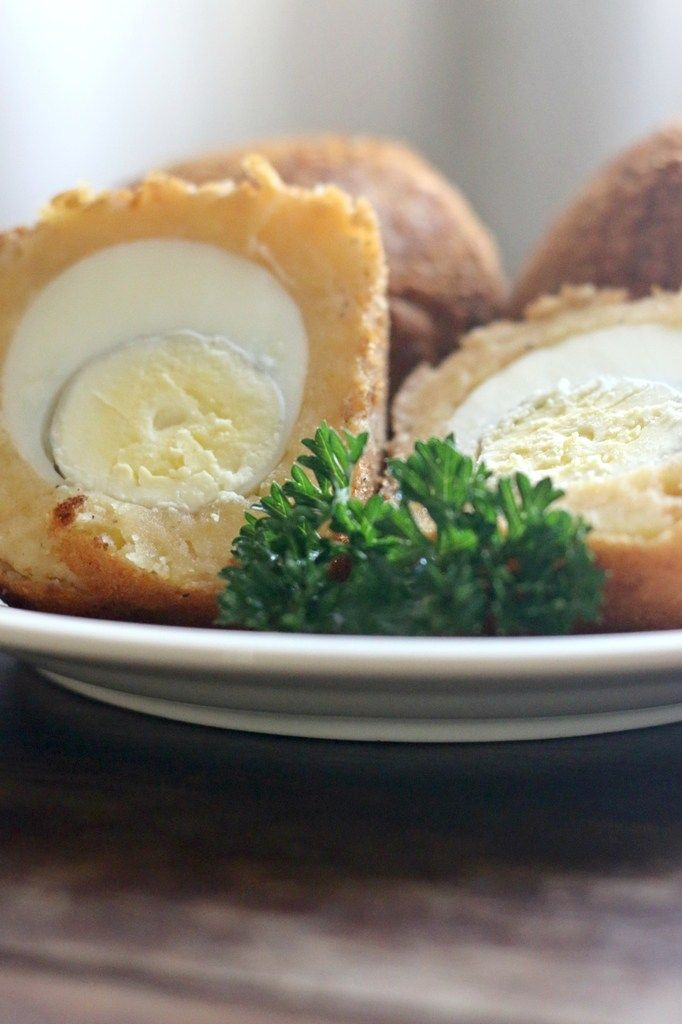
akitcheninuganda.com 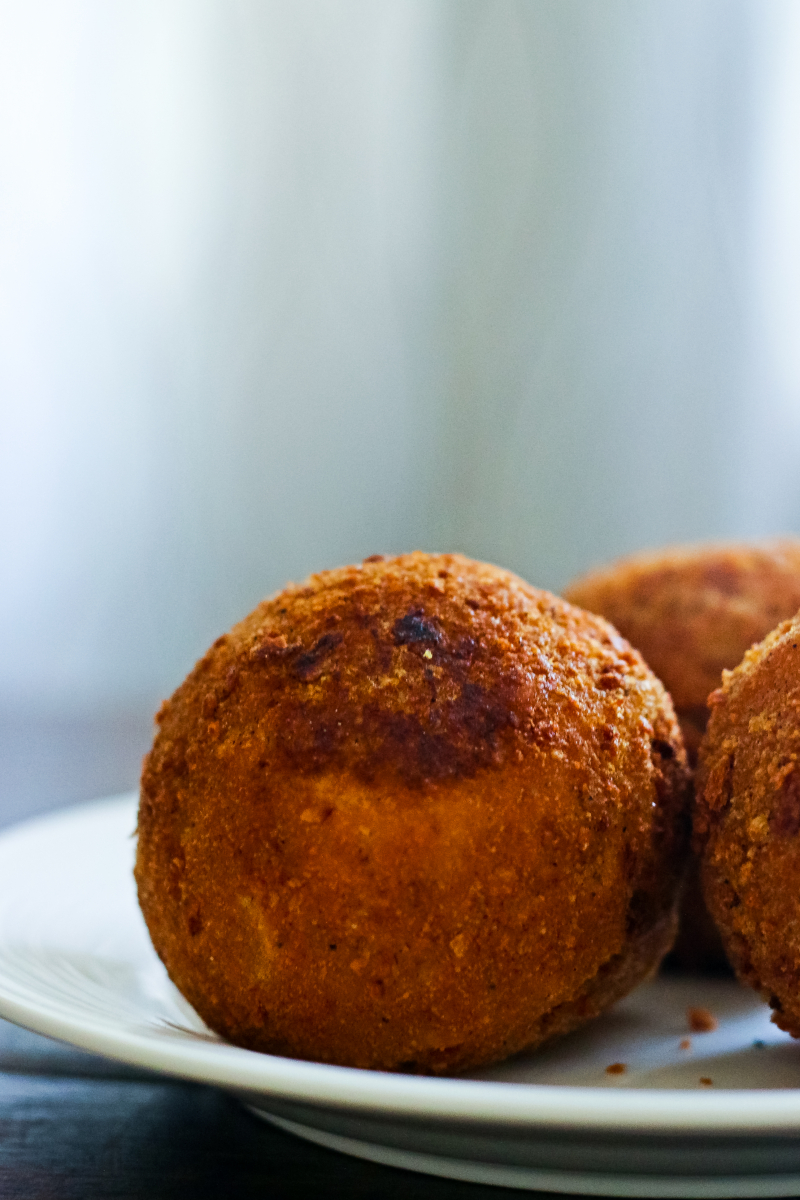
akitcheninuganda.com -
Matooke (matoke) is a popular Ugandan cuisine that is a staple meal for the majority of Bantu tribes. In Western and Central Uganda, there are miles and miles of luscious plantain fields (Masaka). Matooke is grown on these farms and delivered to city inhabitants. Plantains are occasionally peeled and steamed before being mashed and served with your choice of sauce. Matooke is delicious when fried with tomatoes and onions.
Steamed banana puree can be introduced to babies after 6 months. Nendran banana is chosen by babies for weight gain and it provides necessary nutrients. After 6 months, babies can be exposed to this puree. Banana is one of the most widely available fruits and offers numerous health benefits, particularly for babies. Ugandans enjoy steaming the green, unripe ones while still unpeeled (Empogola) and serving them with bacon, muchomo, or grilled beef or goat meat in the evenings or for lunch.
Ingredients
- 1 no nendran banana
water / milk as needed
Instructions
- Trim the edge of the banana. Cut the banana into 2 and steam cook for 10 mins in medium flame.
- Insert a knife and check if its cooked. Now peel off the skin and slit it to remove the seeds in the centre.
- Remove all the seeds from the fruit. Now transfer it to the mixer jar pulse it once.
- Then add little water or milk to get the desired puree consistency. Steamed Banana Puree ready!
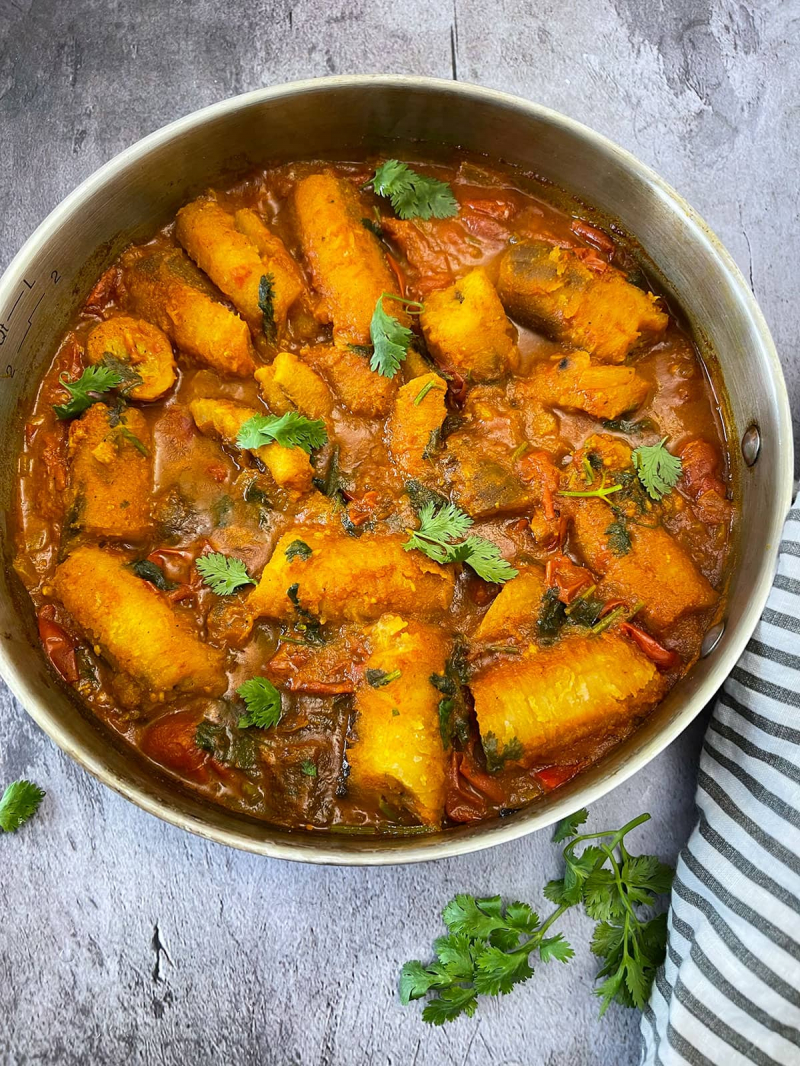
fedandnourished.com 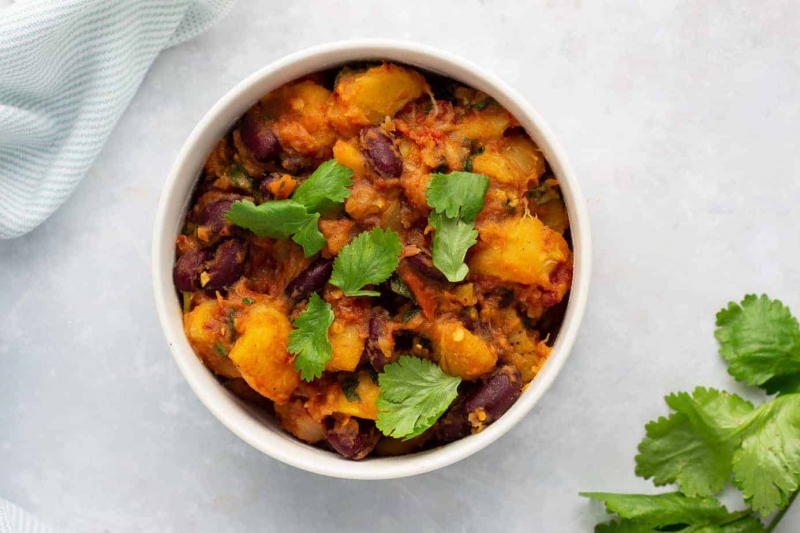
fedandnourished.com - 1 no nendran banana
-
Chicken-nut is a unique Ugandan cuisine that you must try if you want a heartfelt and enjoyable supper. It is usually found in high-end restaurants because it is too pricey for the average person to enjoy. These satay chicken skewers might taste like shoe leather. And if they did, that's fine. Because this peanut-lime sauce will enhance the flavor of everything.
But don't be concerned. It has nothing to do with shoe leather. Promise. Instead, it's golden-brown chicken bits with just the right amount of charred, smokey flavor. With the help of a simple coconut milk marinade and cupboard spices, the marinade elevates the chicken to the next level of flavor. In a stew pot, brown onions, chicken stock, chunks of chicken, spices, and peanut buttercream. After preparation, chicken-nut is typically eaten with rice, posho (Ugali), or matooke, providing a sense of well-being.
Ingredients
- 2 tbs oil, 1 onion cut into wedges, 2 tsp garlic crushed fresh, 2 tsp curry powder, 600 g chicken fillets cut into strips, 2 tbs honey, 1/4 cup crunchy peanut butter, 1/2 cup Massel Chicken Style Liquid Stock
Instructions
- If you don’t have cooked jasmine rice on hand, begin cooking your rice first so it will be ready by the time the chicken and sauce are complete. To begin the sauce, mince the garlic and then peel and grate the ginger into a large skillet or pot. Saute both in the vegetable oil over medium heat for about 2 minutes or until they are soft and fragrant.
- Cut the chicken into small pieces (about one inch across). Add them to your skillet or pot. Saute until lightly browned and cooked through (about 10 minutes).
- Turn the heat down to low and add the coconut milk and peanut butter. Stir gently to combine the two and dissolve any browned bits off of the bottom of the pan. Once the sauce is relatively smooth, add the soy sauce, brown sugar, sriracha, and juice from half of the lime. Stir to combine and heat through (about ten minutes).
- Pull the cilantro leaves from their stems and roughly chop. Scoop about one cup of jasmine rice into the bottom of each bowl and then top with the chicken and sauce (about 3/4 cup). Sprinkle the fresh cilantro over top and enjoy!
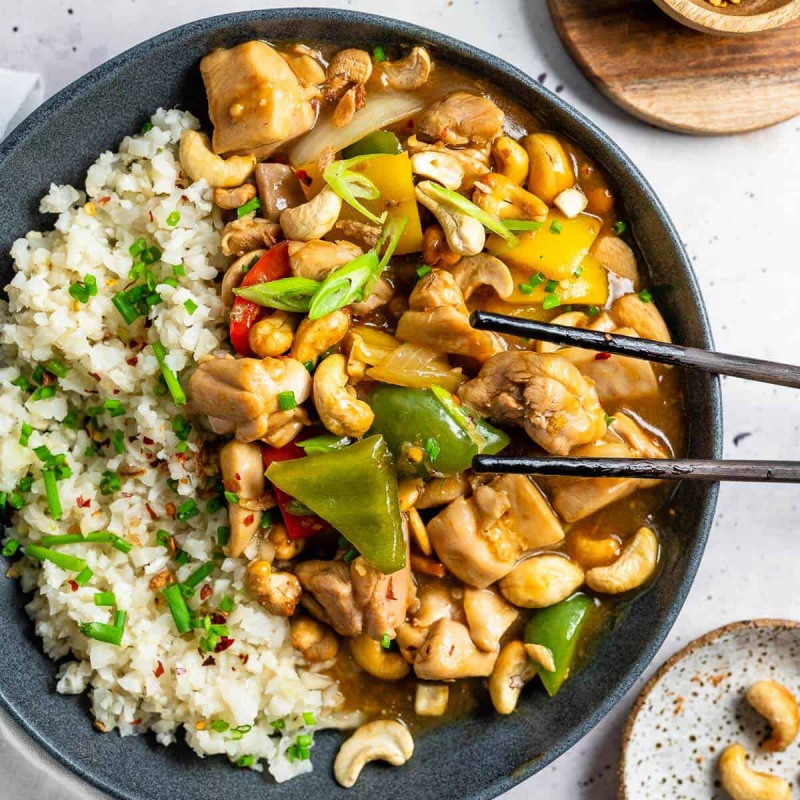
mysugarfreekitchen.com 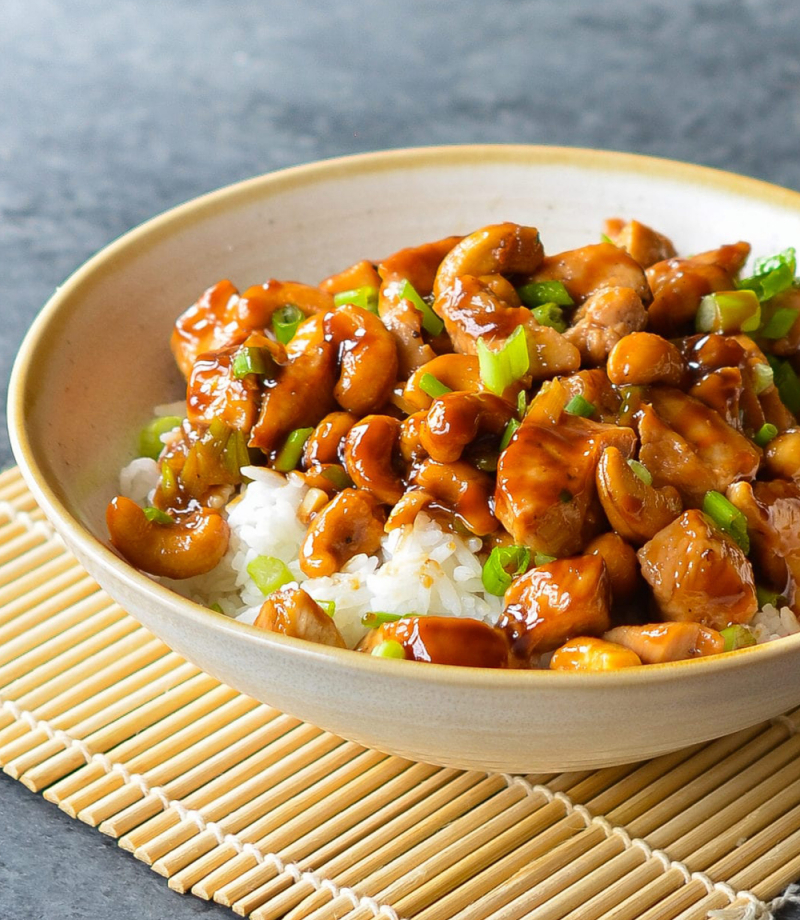
mysugarfreekitchen.com -
Oluwombo, sometimes known as luwombo, is a typical Ugandan cuisine. It is both a royal and a reasonably common dish, particularly around the holidays. It is reported to have been invented in 1887 by Kabaka Mwanga's personal chef, who governed the kingdom of Buganda at the end of the nineteenth century.
The recipe combines meat or chicken with vegetables like as potatoes and carrots, as well as ground nuts wrapped in banana leaves and cooked to perfection with just the proper amount of salt, oil, and spices. It is regarded a wonderful dish for a variety of reasons, including the manner it is presented like a gift wrapped in leaves. Smoked fish is added to the beef/chicken in some variants. People aged 35 and up prefer Luwombo to fast food, which is reserved for the young, but what is the advantage of this steamed cuisine on a banana leaf?
The dish is simply cooked with banana leaf sheathing and the steaming generates a delightful aroma that is exclusive to just luwombo. People, especially the alcoholics who fear the effects of too much alcohol, run to the luwombo dishes to get the full nutrients, which they hope counteracts the alcohol action on their internal organs and cures the nostalgic feeling.Ingredients
- 14 banana leaves, 1 medium onion, chopped, 1 ½ liters (6 ¼ cups) water, ½ chicken, cut into bite-sized pieces, 1 carrot, grated, 1 tomato, grated, 1 clove garlic, 1 piece ginger, ½ teaspoon Royco seasoning (available on Amazon),½ teaspoon salt
Instructions
- Brown the meat in an oiled frying pan, do this in batches so as not to crown the pan, then remove and set aside.
- Add a couple of tablespoons of oil to the same pan then add the onion slices and saute for 10 to 15 minutes to lightly caramelize them, then add the mushrooms and cook for 5 more minutes. Next add the tomatoes, chicken stock cube, salt, pepper, peanuts and the (optional) smoked fish. If necessary add a little water to form a smooth sauce. Cook to heat through and thicken up just a bit.
- Plunge the banana leaves in boiling water to soften them, remove the mid-rib and cut the ends off the leaves to form rectangles. If you buy packed banana leaves, most brands (like Goya) have already removed the mid rib for you. Place a portion of meat and some of the tomato-onion sauce (and smoked meat or fish, if desired) in the center of a leaf. Then add two or three chunks of peeled plantain.
- Fold the leaf from the sides then wrap from the ends to make at least a double layer. Tie into a package with oven-proof string then repeat until all the mixture is used up.
- Place a wire rack or trivet in the bottom of a large casserole dish then add water to the bottom of the trivet. Place the meat packages on top of the trivet and cover the dish. Bring to a boil and steam the packets for an hour.
- Remove the packets from the pot and serve.
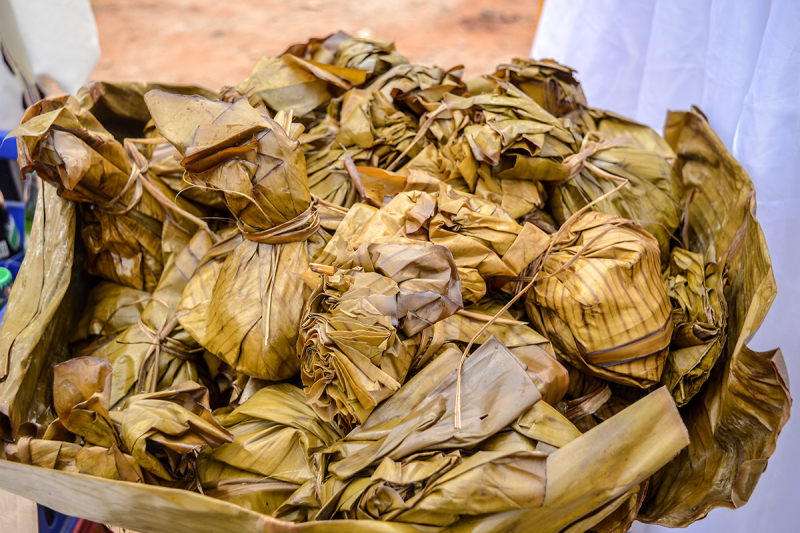
globalpressjournal.com -
If you know anything about Ugandan cuisine, you've probably heard about Luwombo. It's a popular and special meal in Buganda, and mother only made it on holidays like Christmas and Easter. "Luwombo Ground Beef?" Luwombo, there is no such thing as minced/ground beef!" Guess what, there is now. Why, you might ask? Because, well, why not? Simply because it has always been whole meat chunks does not preclude it from being minced meat.
The sole difference between this and the other is that the g-nut paste is mixed with mushrooms and cooked in banana leaves to form the mushroom g-nut luwombo. To make the leaves pliable, they would need to be wilted in the sun for a couple of hours before being surgically reduced from the center rib of each leaf. The leaves would then be cured by mildly heating them on a charcoal stove before carefully folding and concealing them in a safe area where children would not be able to get them until the next day.
Ingredients
- 300gm Ground beef, 200gm Minced G-nuts, 100gm Mushrooms, 2 cloves garlic, minced, Salt and Black pepper to taste, 2 beef stock cubes, 1 small carrot, diced, Bell pepper, diced, 1 tbsp. Powdered ginger, 1 tsp. Paprika, 2 medium sized onions, diced, 1 Cured Luwombo leaf with its fastening rope\
Instruction
- Boil the g-nuts with the beef stock with 1/3 of the onions and salt for 10-15 minutes. Ensure you’ve put enough water they’ll need to get ready, bearing in mind that you won’t add any at any moment. Also remember the thicker the better.
- Meanwhile, season the minced meat with salt and pepper before searing in a mildly oiled wok with garlic, ginger and another 1/3 of the onions. 5-10 minutes.
- Carefully place the Luwombo leaf in a big bowl or saucepan and empty the g-nuts into it, add the beef and the remaining ingredients.
- Delicately wrap the leaf, ensuring that there is no leakage before tying it up with the banana fiber strap.
- Place in the prepared steaming saucepan and cover for maximum steam retention like you would if you were steaming matooke and cook for 1-2 hours before serving.
- Enjoy your Luwombo with matooke, rice, or whatever dry food you want to feast on.
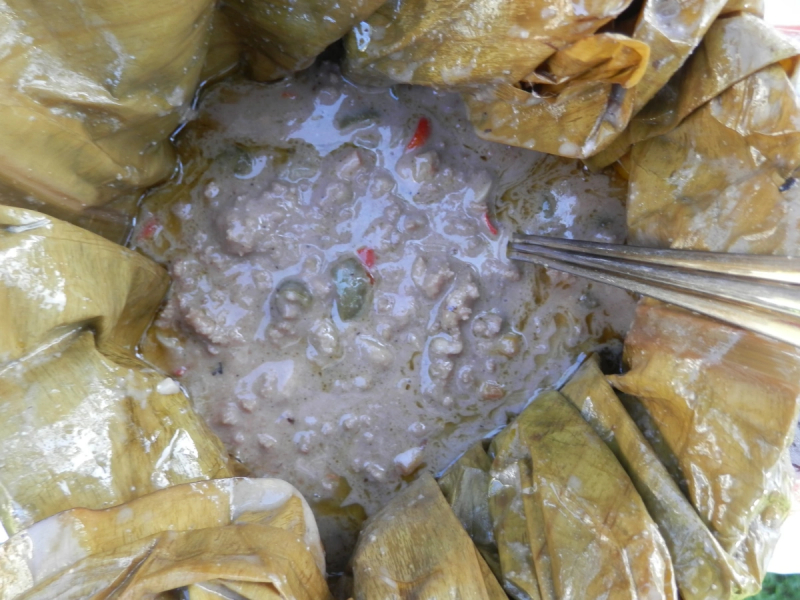
balamaga.wordpress.com -
Muchomo, like many other open-air roasted meals, is known for its delectable aroma, which keeps customers coming back for more. Many people are unaware that the mystery of muchomo lies in the roasting and smoking. The roasting procedure draws out the flavors in the meat in a fascinating way. The smoke, on the other hand, chokes you, whets your desire, and brings back memories of bull roasting in the past.
Beef Muchomo transforms the most basic cut of beef into something luscious, tender, and flavorful. It's seared rapidly on the grill before finishing low and slow in the oven. It has a crisp exterior that is full of texture and flavor, and the inside is tender and delicious when paired with the skewered onions. Pick up some Peri Peri sauce to dip your roasted potatoes in, and don't forget the roasted potatoes!
Ingredients
- 1/2 cup neutral oil (safflower, peanut, etc), 1 lemon, juiced, 1 teaspoon kosher salt, 1/2 teaspoon ground cumin, 1/2 teaspoon garlic powder, 1/4 teaspoon ground cardamom, 1/4 teaspoon ground cayenne pepper, 2 pounds cubed stew beef, 1 onion, quartered and sectioned
Instructions
- In a mixing bowl, whisk together the oil, lemon juice, and spices.
- Add the beef and onions, stir to combine, cover, and refrigerate at least 8 hours, up to overnight.
- Preheat the grill to high heat, and the oven to 200F.
- Remove the beef and onions from the marinade, thread alternately on metal skewers, and grill until a crust forms, about 2 minutes on each side.
- Transfer the skewers to a baking sheet and roast in the preheated oven until cooked though and tender, about 45 minutes.
- Serve with Peri Peri Sauce for dipping.
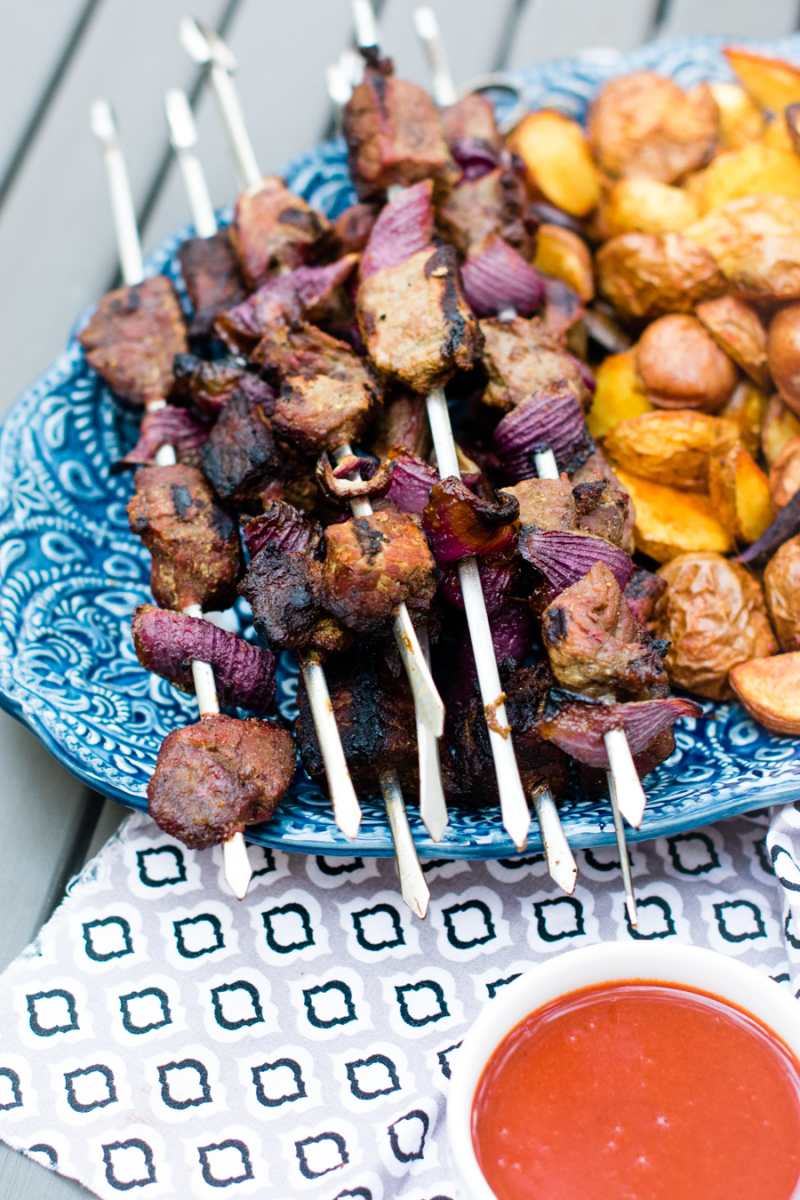
facebook.com 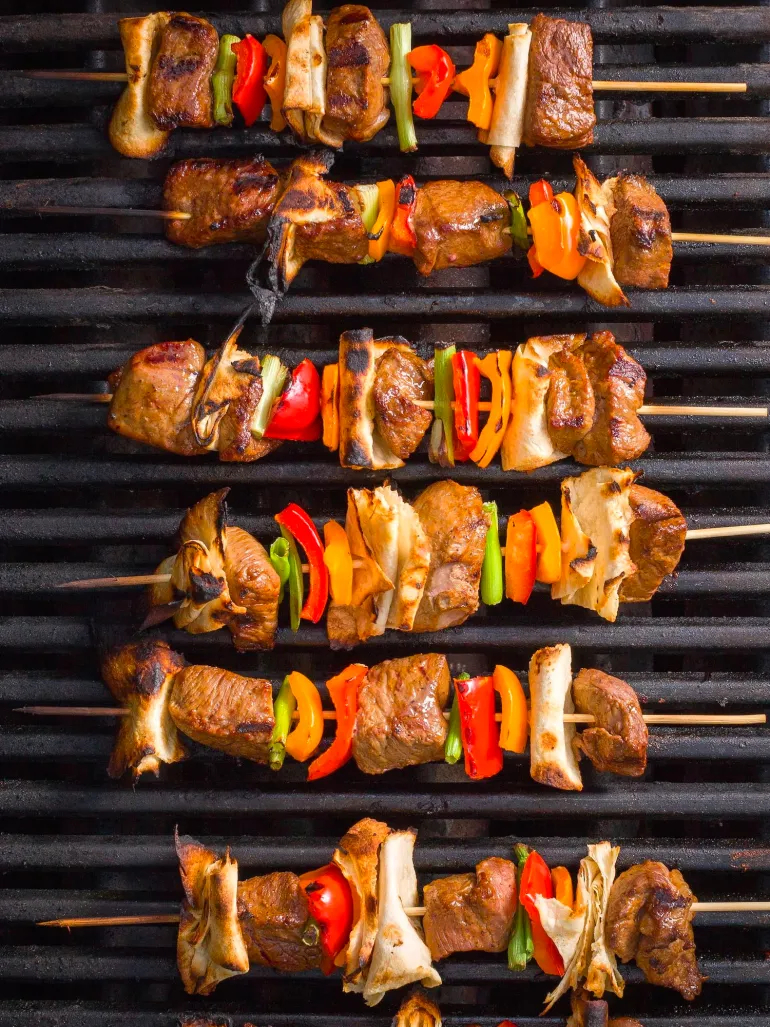
facebook.com -
Baby back ribs (also known as pig back ribs) is one of the best foods in Uganda with recipe. Pig back ribs are sourced from the loin muscle near the backbone of the hog. This lean cut of pork is moist and delicious. Smoked, grilled, or baked baby back ribs They're typically seasoned and accompanied with a sweet and delicious barbecue sauce. Spare ribs are removed from the bottom of the rib cage, while baby backs are removed from the top.
Baby back ribs are leaner and cook faster than their heavier counterpart, spare ribs. Spare ribs have a deeper flavor, according to some, because they are more marbled, but baby backs are more popular because they have more flesh and are more soft. By following a few simple steps, you can make delicious baby back ribs in the oven. Chef John's full recipe is available below, but here's a quick rundown of what to expect:
Ingredients
- ½ cup ancho chile powder, ¼ cup white sugar, ¼ cup brown sugar, ¼ cup salt, 2 tablespoons freshly ground black pepper, 1 tablespoon ground cumin, 1 teaspoon dry mustard, 1 teaspoon ground cayenne pepper, ½ teaspoon ground dried chipotle pepper, 1 rack baby back pork ribs, 1 cup barbeque sauce
Instructions
- Preheat the oven to 250 degrees F (120 degrees C).
- Mix ancho chile powder, white and brown sugars, salt, black pepper, cumin, dry mustard, cayenne, and chipotle pepper in a small bowl until combined.
- Place rib rack, meat-side down, on heavy-duty aluminum foil. Prick back of the rack several times with a knife.
- Generously apply a coating of dry rub to all sides of the rack. Store any remaining dry rub in an airtight container for future use.
- With the meat facing down, fold foil around the rack to create a tight seal. Transfer to a sheet pan.
- Bake in the preheated oven until tender and cooked through, about 2 hours. Remove and cool 15 minutes.
- Increase oven temperature to 350 degrees F (175 degrees C).
- Open foil, drain and discard any accumulated juices and fat. Brush barbeque sauce on all sides of the rack.
- Turn the rack on the foil so the meat is facing up. Return to the oven, leaving the foil open and bake for 10 minutes. Remove from the oven and brush another layer of barbeque sauce on the meat side only. Repeat baking and brushing with sauce 4 more times, for a total of 50 minutes baking time.
- Cut rack into individual rib segments and serve with more barbeque sauce.
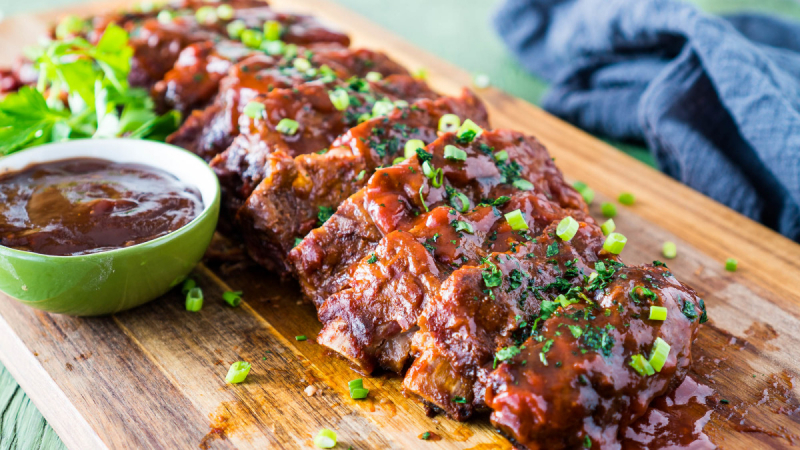
primaverakitchen.com 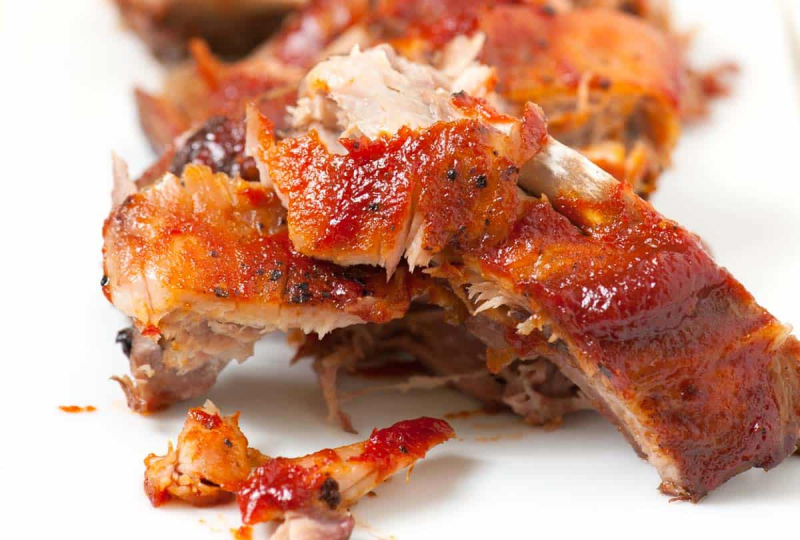
primaverakitchen.com












